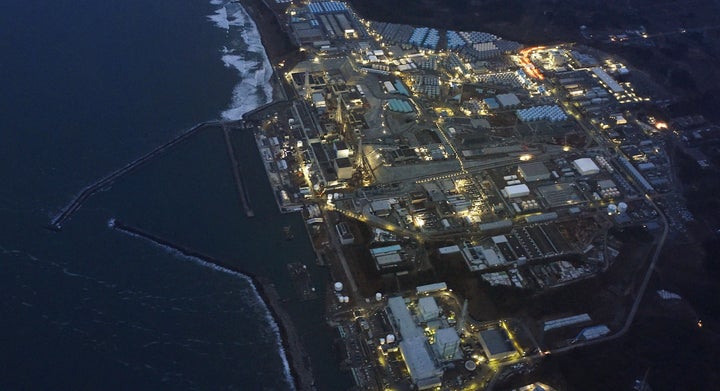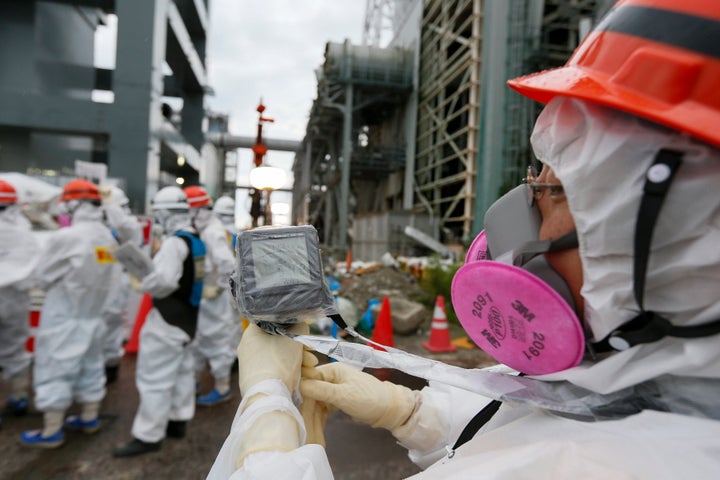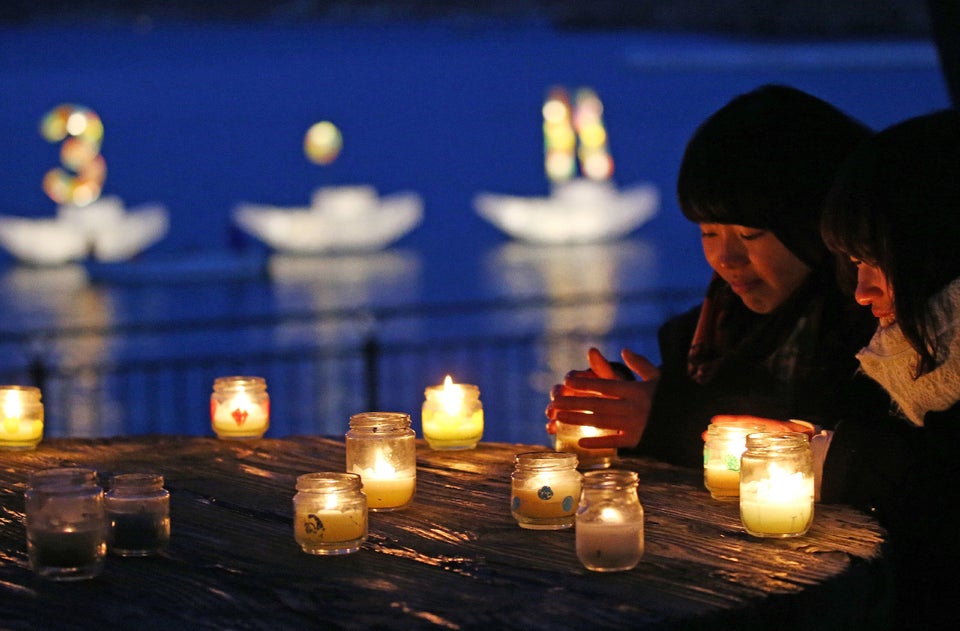
• The nearly mile-long structure consists of underground pipes designed to form a frozen barrier around the crippled reactors.
• The $312 million system was completed last month, more than a year behind schedule.
• Nearly 800,000 tons of radioactive water are already being stored onsite.
Japanese authorities have activated a large subterranean "ice wall" in a desperate attempt to stop radiation that's been leaking from the Fukushima Daiichi nuclear power plant for five years.
The wall consists of a series of underground refrigeration pipes meant to form a frozen soil barrier around the four reactors that were crippled during the 2011 Tohoku earthquake and tsunami.
Construction of the $312 million government-funded structure was completed last month, more than a year behind schedule, the Associated Press reports. The nearly mile-long barrier is intended to block groundwater from entering the facility and becoming contaminated.
Tokyo Electric Power Co., or TEPCO, which owns the plant, activated the system Thursday, a day after obtaining approval from Japan's Nuclear Regulation Authority.
In a video detailing the ice wall's design, TEPCO said the technology has been successfully used to prevent water intrusion during the construction of tunnels, but this is the first time it has been used to block water from entering a nuclear facility.
"We will create an impermeable barrier," the company said, "by freezing the soil itself all the way down to the bedrock that exists below the plant. When groundwater flowing downhill reaches this frozen barrier it will flow around the reactor buildings, reaching the sea just as it always has, but without contacting the contaminated water within the reactor buildings."
TEPCO says the ice wall will be activated in stages over the next several months and is one of several measures the company is taking to reduce the amount of water being contaminated on the site.

Nearly 800,000 tons of radioactive water are already being stored in more than 1,000 industrial tanks at the nuclear plant, according to the AP.
While hopes are high that the ice wall will prove successful in stopping additional radioactive water from seeping into the Pacific Ocean, Shunichi Tanaka, chairman of the Nuclear Regulation Authority, urged caution.
"It would be best to think that natural phenomena don't work the way you would expect," he told reporters Wednesday, according to the AP report.
The activation of the ice wall comes just weeks after a TEPCO official reported that robots designed to access the dangerous interior of the plant and seek out the melted fuel rods were "dying" from the high levels of radiation.
The video below details how the ice wall is expected to work.

